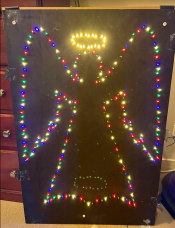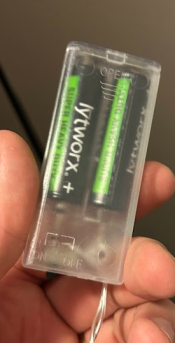SimoG
New elf
Evening!
This is my first year moving off Bunnings lights with the supplied controller, and going to something centrally controlled with FPP and some of Alan's hardware (FPP on Beagleboard and DMX2-24)
In my incredible planning, I neglected to include one of the elements of an Angel prop that sits in our front window. The majority of the lighting on the prop is a single string of Bunnings lights, however I have a halo above the angel which is controlled by a manual on off switch with 2xaa batteries power supply. I am happy to convert the string to be USB controlled (with a 3V regulator) however I am not sure how to connect it to FPP. Can I use any of the GPIO ports on the Beagleboard to trigger the output? I would love the input from more more experienced here on how I can get this working, with a trip to Jaycar, or something off Amazon that can arrive quickly.


This is my first year moving off Bunnings lights with the supplied controller, and going to something centrally controlled with FPP and some of Alan's hardware (FPP on Beagleboard and DMX2-24)
In my incredible planning, I neglected to include one of the elements of an Angel prop that sits in our front window. The majority of the lighting on the prop is a single string of Bunnings lights, however I have a halo above the angel which is controlled by a manual on off switch with 2xaa batteries power supply. I am happy to convert the string to be USB controlled (with a 3V regulator) however I am not sure how to connect it to FPP. Can I use any of the GPIO ports on the Beagleboard to trigger the output? I would love the input from more more experienced here on how I can get this working, with a trip to Jaycar, or something off Amazon that can arrive quickly.



